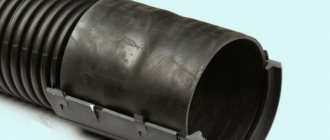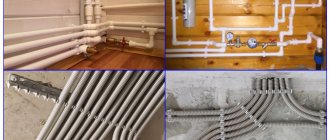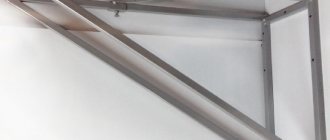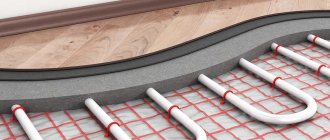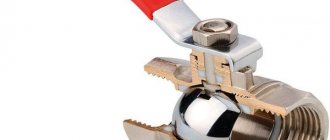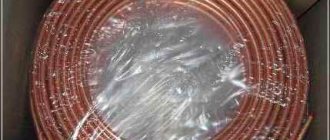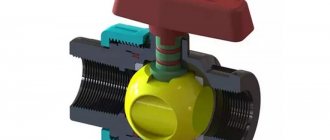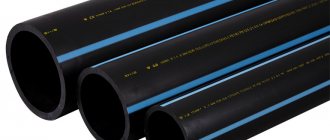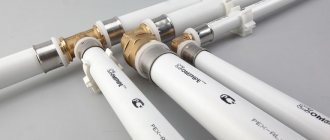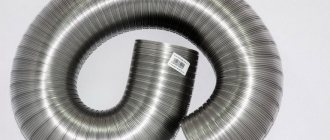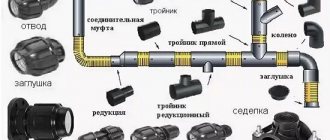- Introduction
- About the production of HDPE pipes
- Types of HDPE pipes for laying cables in the ground
- Guest standards and standards for HDPE pipes
- Marking of HDPE pipes
- Application of HDPE pipes for cable laying
- Advantages and disadvantages of HDPE pipes
- Selecting HDPE pipes for cable laying
- Methods for laying cables in the ground
- Purchasing HDPE pipes at wholesale prices
About the production of HDPE pipes
HDPE pipe is an unusual construction item, the origin of which is very interesting. Polyethylene is used to produce such a pipe. But it’s not simple. As a rule, one of two variations of polyethylene is used:
- LDPE. Stands for Low Density Polyethylene
- MDPE. Stands for Medium-density polyethylene
Interesting! There are also non-flammable and low-flammable HDPE pipes. They are complex, that is, they are made from a mixture of two different materials - polyethylene and fire retardant.
LDPE is a fairly popular material. Due to its transparency, as well as high antiseptic properties, it has found wide application in a variety of fields. First of all, it is used in medicine, construction and the production of food packaging. A large number of different pipes for laying cables in the ground, underground, implants and prostheses - they are all made of LDPE polyethylene. The choice of such a material is quite simply explained: LDPE must be neutral to other materials and skin tissue. Also, this material is not capable of causing adverse reactions.
Now about the actual production of HDPE pipes. The basis for obtaining this type of product is the extrusion method. In short, this is when the molten material is forced through a die (forming working head of an extruder).
Let us tell you in a little more detail how the manufacturing process itself occurs. The production technology of any HDPE pipe consists of sequentially performing the following processes:
- homogenization;
- melting in a controlled manner;
- softening and formation of polymer raw materials in the extruder;
- cooling of the finished pipe;
- final calibration before release for sale..
The production of HDPE pipes begins with loading granulated raw materials into the receiving hopper of the extruder. From there it enters the working cylinder, i.e. into the die. Heating elements are located throughout the cylinder and raw materials will collide with each of them, moving from the loading zone further.
Interesting! Variety is the hallmark of low pressure polyethylene pipes. This is due to the use of different types of spinnerets. Each of them, at a minimum, has different heating elements.
During the sizing process, the extruder blank enters a vacuum bath where the pipe is shaped into its final shape by pressure pressing the blank against the sizing mold.
All production is carried out on modern and high-tech equipment, which has one extremely important feature - automated quality control. She helped achieve several important successes in industry:
- optimization of raw material consumption;
- minimizing the amount of defects;
- price drop
All this became possible thanks to constant monitoring, as well as the ability to adjust indicators at any stage of production.
Low-density polyethylene has the following physical and chemical characteristics:
- Great hardness. The reason is the high crystallinity of the substance.
- High tensile and compressive strength.
- Vapor and liquid impermeability, raised almost to the absolute level.
- Good chemical resistance. HDPE pipe is not afraid of most hazardous environments, which contain acids, alkalis, fats and oils.
- Excellent dielectric properties. Protects against all electrical problems.
- Recyclable. HDPE pipe can be easily welded and glued.
Important! Such pipes are used for a variety of purposes, so they can often be found without an installed probe.
Types of HDPE pipes for laying cables in the ground
HDPE pipe is a material used for laying electrical cables. Depending on the tasks set by the Client, builders must use one or another type of pipe or corrugation.
Let's look briefly at each option.
Corrugation for laying cables underground
HDPE corrugation for laying cables in the ground is an ideal option. Builders can use one of two types of such items.
- Lightweight corrugated. This type of corrugation for laying cables in the ground is very popular. It bends perfectly because it has high elasticity. This corrugation is ideal for installing electrical networks with a power of no more than 1 kW. These include not only television cables or for telephone networks, but also for household electrics.
- Heavy corrugated. Unlike a lightweight one, the walls of such a corrugated pipe are additionally equipped with reinforcing mesh. Although such corrugation weighs more and has less flexibility, the level of protection increases significantly, which is important when laying cables underground.
Let's look at the main differences between corrugations for underground cable laying and conventional ones:
- Adaptability. HDPE corrugated material is not only highly resistant to shock loads and vibration, but also flexible in operation.
- Convenient cable handling. The double-walled corrugated pipe is equipped with a special broach - a probe. Thanks to it, it is more convenient for a specialist to thread the cable along long sections. There are a variety of bays. The most common variations are 20, 50 and 100 meters long.
- Wide operating temperature range. Corrugation has a fairly high temperature threshold, which it can withstand without destructive consequences - from -40 to +90°C.
- Visual marking. Red corrugation is used if you need to lay cables underground in a trench. For the same task, take an orange corrugation. In other cases, ordinary sulfur is sufficient.
HDPE pipes for laying cables underground
Instead of corrugation, you can also use one of three variations of HDPE pipes for laying cables.
- Halogen-free. It is characterized by increased fire resistance. Does not emit hazardous compounds, even if it is in the fire zone for a long time. Moreover, it extinguishes on its own. Builders use such a pipe to lay cables inside buildings.
- Double-walled. The shell of such a pipe has an additional layer of high-density polyethylene, which provides additional protection from any external influences when laying cables in a trench in a HDPE pipe. The outer shell is corrugated, which increases the strength of the pipes. The inner wall is made smooth - this makes it easier to pull the cable along its entire length, even if it is mounted in the ground.
- Rigid, smooth-walled. This pipe is equipped with steel wire, which increases the overall rigidity of the product. In addition, it gives the pipe additional bending strength. This kind of cable ducts are often used when laying cables inside a brick wall or when installing underground.
Guest standards and standards for HDPE pipes
Laying cables in HDPE pipes is quite a difficult task. And the point here is not in the cable, but in the pipe itself. A builder who wants to do his job well needs to find a low-density polyethylene pipe that will meet a variety of HDPE pipe standards.
High-quality HDPE pipes, as a rule, very strictly comply with GOSTs 16337 and 16338. You can find out in detail about other GOSTs here.
Now - about the standards. Any finished product in the form of a HDPE pipe must not have the following damage:
- swelling and swelling;
- cracks;
- chips;
- other defects.
A high-quality pipe should not delaminate. Its inner part should be perfectly smooth, and its outer part should have a uniform structure. In this case, there will be no problems with her for a long time.
Any HDPE pipe for cable laying must be wear-resistant. In order to serve a person for a long time, polyethylene products must withstand internal pressure up to 20-38 MPa.
Consider a table that lists the operating pressure values for different types of pipes:
| Type of HDPE pipe | Pressure value, MPa |
| Lightweight | 0,25 |
| Medium-light | 0,4 |
| Average | 0,6 |
| Heavy | 1 |
Features of electrical wiring in the floor
Preferred areas of use.
Laying cables in the floor is most appropriate for new construction when the room is in “bare walls” condition, i.e. in fact, in new buildings (as shown in Figure 1). This allows you to minimize the time and effort required to carry out electrical wiring due to the large free space and the ability to eliminate the need for wall chiselling.
Figure 2 shows that this provides the greatest benefit in the area near the central distribution panel.
Rice. 1. Formation of a system of underground channels at the rough finishing stage
Rice. 2. Inserting corrugated tubes into the central electrical panel
For wooden houses in which the floorboards are laid on massive joists, there is enough free space for the channels of the type in question along with the distribution boxes. This allows this type of wiring to be used also during major repairs.
Rules for forming channels and pulling cables.
When forming channels, it is advisable to minimize the number of turns. Although current regulations allow two or even three turns, it is advisable to perform no more than one.
The maximum length of a straight section should not exceed 15 m.
When laying several channels, they should be placed in parallel; when turning, intersections are not allowed (this rule is shown in Figure 2).
Rice. 3. Rules for parallel laying of several channels
An example of improper planning of a canal system with a large number of intersections is shown in Figure 4.
Rice. 4. Incorrectly planned canal system with a large number of intersections
It is advisable to leave a long cord made of wire, cable or plastic rod in the laid channel, which is used to tighten the cables.
To facilitate pulling and replacing wires, they should not fill more than 50% of the channel cross-section “in the clear” (0.6 of the pipe diameter).
To minimize the forces applied to the cable when laying in a non-linear channel, its direction should be chosen so that the turn is closer to the beginning of the channel, and not to its end. This situation is shown in schematic form in sketch Figure 5.
Rice. 5. Rules for choosing the direction of pulling cables in pipes with turns
Marking of HDPE pipes
With the help of pipe marking, careful monitoring of the compliance of the quality of the product and its actual performance characteristics with the data indicated in the official documentation is carried out. Each product must have a quality mark. It indicates that all requirements of the standards enshrined in legislation are strictly enshrined. In addition, a trademark or full name of the manufacturer is applied.
Each pipe must display a code, as well as the number of the state or international standard according to which the product is manufactured. The material of the product is also indicated.
Mandatory data that is indicated in the marking is the minimum wall thickness and outer diameter of the product. The nominal pressure (in Bar) must also be mentioned. This is the pressure of the environment that a pipe underground can withstand during long-term operation at a temperature of +20 °C.
Separately, the possibility of operating the product for gas or transporting drinking water may be mentioned. The batch number and release date must be indicated.
According to state standards, HDPE pipes for laying cables in the ground can belong to one of the classes: heavy (T), medium-heavy (ST), medium-light (OS), medium (S), medium-light (SL), light (L).
Pipe for laying cables in the ground. Selling in sections.
We sell HDPE pipes for underground installation with a diameter of more than 75 mm in 12-meter sections. Since the sale is direct, you have the opportunity to make an individual order: we divide 12-meter sections into smaller pieces. We work with wholesalers and retail orders.
If you make a large purchase, you can save a lot - we'll give you a discount. We recommend purchasing pipes for laying cables in the ground with a reserve to avoid unforeseen circumstances.
Large diameter HDPE pipes are connected underground using butt welding.
Application of HDPE pipes for cable laying
Depending on what kind of pipe you plan to use, the cable can be laid in the ground, above ground, or even indoors. In the latter case, the structure can be placed in walls made of plasterboard, brick or concrete.
Using pipes to lay cables underground or in walls requires following a certain technology, as well as taking into account some nuances, for example:
- Such pipes can be used at temperatures down to -30 °C.
- If a channel trench is planned that will lie deeper than 2 meters, it is important to equip a protective layer. As a rule, it is a concrete channel, the thickness of which is at least 80 mm.
- Products that are positioned horizontally can be concreted into the foundation of the structure.
- During installation, complete tightness of all existing connection points must be ensured.
- If condensation may form during operation, a draw-in tube must be installed to drain it.
- The tightness of the connections is necessary to reliably protect the laid cable from dust, various contaminants and moisture, therefore all connections must be properly sealed. Note that the most common connection methods are the use of compression couplings, as well as butt welding.
- Thanks to the use of fittings, such pipes can be conveniently connected into a single pipeline with any configuration. There is no need to install cathodic protection during installation.
It is important to take into account the major disadvantage of HDPE pipes, which is that the product can support and spread combustion. In this regard, it is important to cover them with fire-resistant materials - for example, cement mortar, concrete, earth.
Subtleties of laying technical pipes
Depending on the type of pipe, cable laying can be carried out above ground, underground or indoors. With the latter option, the protective structure is placed in concrete, brick or plasterboard walls. Carrying out work requires taking into account some nuances, among which are the following:
- The operation of HDPE pipes is allowed at temperatures down to -30 °C.
- When laying a channel trench, the depth of which is more than 2 meters, it is necessary to provide a layer of protection - a concrete channel 80-100 mm thick.
- Horizontally located products can be concreted into the foundation structure.
- It is important to ensure the tightness of the connection points during installation.
- If the operation of the pipe involves the possible formation of condensate, then it is mandatory to install a draw-out tube to collect it.
The tightness of the connections ensures that the cable is protected from moisture, oil, dust and other contaminants entering the pipe. The joints must be reliably sealed.
Note! The most airtight connection methods are the use of compression couplings and butt welding.
Thanks to the use of HDPE fittings, you can easily create a pipeline of any configuration. There is no need for a cathodic protection device during installation.
When laid at a shallow depth, pipes do not require additional protection in the form of a concrete channel
Advantages and disadvantages of HDPE pipes
HDPE pipes have significantly more advantages than disadvantages. These include:
- affordable cost of products;
- wear resistance and durability. Corrugation for underground cable laying can last at least 50 years, which is even longer than in the case of metal products;
- Installation of such pipes is quite simple and takes little time. Installation of HDPE pipes can be carried out even in the absence of experience and skills in this matter, if you carefully study the recommendations of specialists. People experienced in this area note that installing HDPE pipes takes less time than welding metal pipeline elements, and the joints are even more reliable - it’s all about the solidity of the structure;
- the manufacturing material contains no substances hazardous to the human body or the environment;
- HDPE pipes are not subject to corrosion - the structure of the material remains unchanged for decades;
- the inner surface of the pipes, as in the case of polypropylene products, is completely smooth - this is convenient when laying cables;
- the manufacturing material is very resistant to alkalis and acids, so such pipes can be used in various fields;
- the material is characterized by flexibility, which simplifies the laying of cables underground and the use of the product for other purposes. Pipes are easy to bend and there is no fear of it breaking;
- the light weight of the product allows you to do without the use of special heavy equipment - any task can be performed manually;
- in case of freezing, the walls will not rupture due to high elasticity.
Among the disadvantages are the following:
- HDPE pipes cannot be used in open areas - they are more suitable for laying cables in a trench. If you do not take this recommendation into account, you may encounter fairly rapid destruction of the material, since polyethylene is not resistant to UV rays;
- the material reacts negatively to too high a temperature, so it is not used for hot water supply. Permissible operating temperature - 45 degrees;
- not too strong - the product can be damaged by sharp objects.
Despite certain disadvantages, HDPE pipes are very popular - and here's why:
- Ensuring reliable protection of cables, while the risk of electric shock even in the event of insulation damage is very low.
- Thanks to its design, cable pulling is very simple.
- Products made of polyethylene, unlike metal boxes, are more convenient during transportation, and they are not afraid of rust.
- The material does not conduct electric current, so additional protection is not required.
Polyethylene pipes for communication cables (telephone, alarm, etc.).
Cable lines intended for connecting home telephones, alarm equipment, CCTV cameras, and other control equipment, due to their low power consumption, are made quite thin. And if you lay them openly, the risk of damage will be too high. Therefore, it is recommended to place the wires in special polyethylene pipes for communication cables, which will provide reliable protection for them. For these purposes, we produce pipes of small diameter.
Selecting HDPE pipes for cable laying
One of the main criteria for choosing a pipe is how many cables are planned to be placed in it. Thus, standard technical HDPE pipes for laying cables can have a diameter from 16 to 225 mm. Products with a small cross-section (up to 90 mm) are manufactured in coils of 100-200 mm. If the diameter of the HDPE pipe for cable laying is larger, it is usually sold in sections of 12 meters or more, which are subsequently welded.
As a rule, no more than 4 cables are placed in one corrugation for laying wires underground. If its cross-section is 6-8 mm2, it is better to choose a product with a diameter from 20 to 40 mm.
It is also important to choose a product based on strength indicators in order to lay the cable in a HDPE pipe in the ground. For such purposes, the product must be as durable as possible. You can estimate this indicator yourself by calculating SDR (Standard Dimension Ratio). This parameter is the ratio of the outer diameter to the thickness of the product. The smaller it is, the stronger the corrugation will be.
Methods for laying cables in the ground
Today, construction requires the most effective and at the same time creative solutions. The use of HDPE pipes for external cable laying or underground is dictated primarily by their strength and ease of use. Their adaptability comes in handy when the situation requires the use of one or another installation method.
Let's talk about each of them in a little more detail.
Trenchless installation method
One of the most popular technologies for laying communications in the ground. It is used in hard-to-reach places, and therefore will require the use of special equipment and machinery.
This method is distinguished by horizontal drilling. Such a solution, despite its complexity of implementation, makes it possible to lay communications and at the same time practically not disturb the condition of the top layer of soil.
To carry out work, the company must first study the composition of the soil and obtain permission for geodetic work. Laying a cable in a HDPE pipe using the trenchless method occurs in several stages:
- drilling a pilot well;
- well expansion;
- installation of HDPE pipe with cable inside.
When drilling a pilot well, specialists use a drill head. Since it heats up during operation, a special solution is supplied into the ground through the holes, which fills only the formed well. This allows you to “kill two birds with one stone” - both to cool the instrument and to significantly reduce the possible risk of collapses.
If necessary, specialists can expand the well. This can be done with a special trimmer, which will replace the drill head. Only after all this is the HDPE pipe pulled into the well.
This technology, despite its advantages, has one big disadvantage - the complexity of implementation.
Important! This method of laying an electrical cable can only be implemented by those companies that specialize in drilling and have the entire arsenal of equipment and special equipment necessary for this.
Trench installation method
The technology of laying HDPE pipes in the ground is an alternative to trenchless. It is used in cases where it is necessary to supply electricity to a private house or country house.
Before starting work, specialists inspect the cable for the integrity of its sheath.
Important! If the sheath of an electrical cable is severely damaged, it is rejected, which leads to replacement with another one with a solid sheath.
The process of laying a HDPE pipe with cable in the ground will look like this:
- Marking of territories with further digging of a trench of the required depth.
- Installation of HDPE pipe of suitable diameter.
- The cable is also stretched (it is better to keep some supply of cable so that there is no tension).
- Filling the trench with sand and soil.
To make it easier to locate the cable, a specialist can lay a warning tape over the corrugated pipe trench.
Important! When using a plastic pipe to lay cables in the ground, it is advisable not to use any connecting elements or couplings. This will easily break the seal, which is important.
When leading cables into structures, fittings should be used.
On even sections of cable laying, it is worth using solid parts of pipes, the cross-section of which is at least 4 mm. To tighten the wire into a corrugated pipe for laying cable underground, metal wire or nylon broach is traditionally used.
Methods and rules for laying HDPE pipes
Installation of a HDPE pipeline to protect the cable can be done underground, open, or indoors.
When carrying out work, a number of important points must be taken into account:
- Installation can be carried out at temperatures not lower than -30°C.
- When using the trench method for laying at a depth of more than 2 meters, it is worth providing a protective concrete channel.
- All joints must be sealed. To do this, you can use compression couplings or special fittings. The butt welding method can be used.
Laying pipes inside buildings
Preliminary marking of the laying route is carried out, after which the pipes are fixed, and one or more cables are inserted into them. It is advisable to place the pipeline running along the floor in a concrete screed located along the wall or ceiling - plaster it. In the future, this will allow any manipulations with the wiring without violating the integrity of the surface.
We recommend that you read: Why do you need a ventilation fungus and how to install it?
Note! It is more convenient to fix it on the floor with metal brackets, and on the wall and ceiling with holders with a latch.
Laying outdoors in a trench
Here the sequence of actions is slightly different:
- The future laying route is being marked.
- The soil is excavated to the required depth.
- A sand cushion 10-15 cm thick is laid at the bottom of the trench.
- A HDPE pipeline is placed on a layer of sand, all joints of which are ensured tightness.
- A cable is pulled into the pipeline, which should lie freely, without tension.
- Next, the pipe is covered with a layer of sand (10-20 cm), the remaining height is filled with soil.
It is important! In order to subsequently be able to easily determine the location of the pipeline underground, it is advisable to mark its path with warning tape or similar devices.
When laying power cables underground, the use of couplings and any other connecting elements should be kept to a minimum. Even with proper installation, the tightness at the joints will be far from ideal. But in places where the cable exits into the building it is no longer possible to do without fittings.
Trenchless method of laying in the ground
It is carried out exclusively with the help of specialized equipment capable of horizontal drilling.
A so-called “pilot” well is drilled, which in the second stage of work is expanded using a special nozzle. Often, simultaneously with drilling, a solution is supplied into the well, strengthening the walls of the channel and protecting them from collapse.
Next, a HDPE pipe with a cable placed in it is inserted into the prepared hole. This is also done using special equipment.
This method makes it possible to lay pipes without disturbing the surface layer of the soil, however, due to its complexity and high cost, it is used mainly by large construction and utility organizations.
Purchasing HDPE pipes at wholesale prices
You can purchase corrugated cables for laying electrical cables in the ground at. We manufacture our products ourselves and guarantee their quality, as well as compliance with state standards. When using HDPE pipes for laying cables underground, purchased from our company, you can rest assured of the reliability and durability of the structure.
We offer HDPE pipes and other types of products at competitive wholesale prices. To find out more about our offers, call us at our number or leave your question on the website - specialists will tell you about the products and terms of cooperation.
Technical HDPE polyethylene pipes for cable laying wholesale and retail.
The customer can purchase HDPE pipes manufactured in accordance with the technical requirements for these products at retail or wholesale. Retail trade allows you to order only the required number of meters. Wholesale sales are beneficial to companies in which the use of technical polyethylene pipes is their daily activity. We deliver goods throughout Moscow, the region, and within the Russian Federation. Customers from any region of Russia can order from us the required number of HDPE pipes for cable laying and receive them in the shortest possible time.
